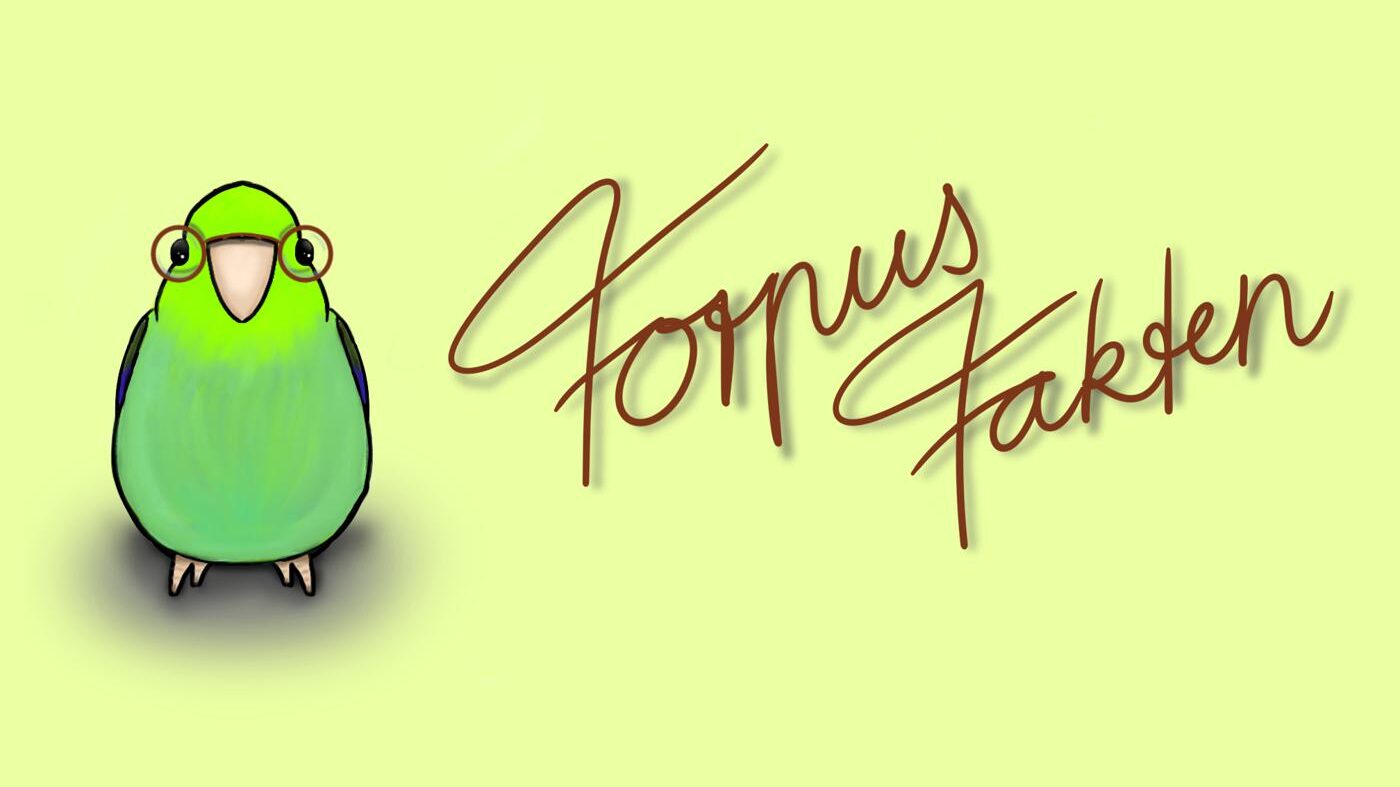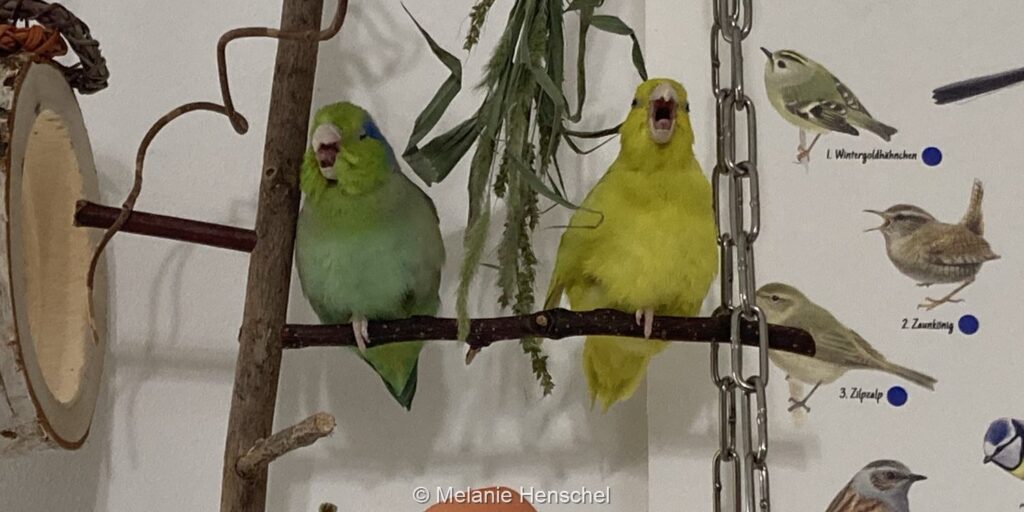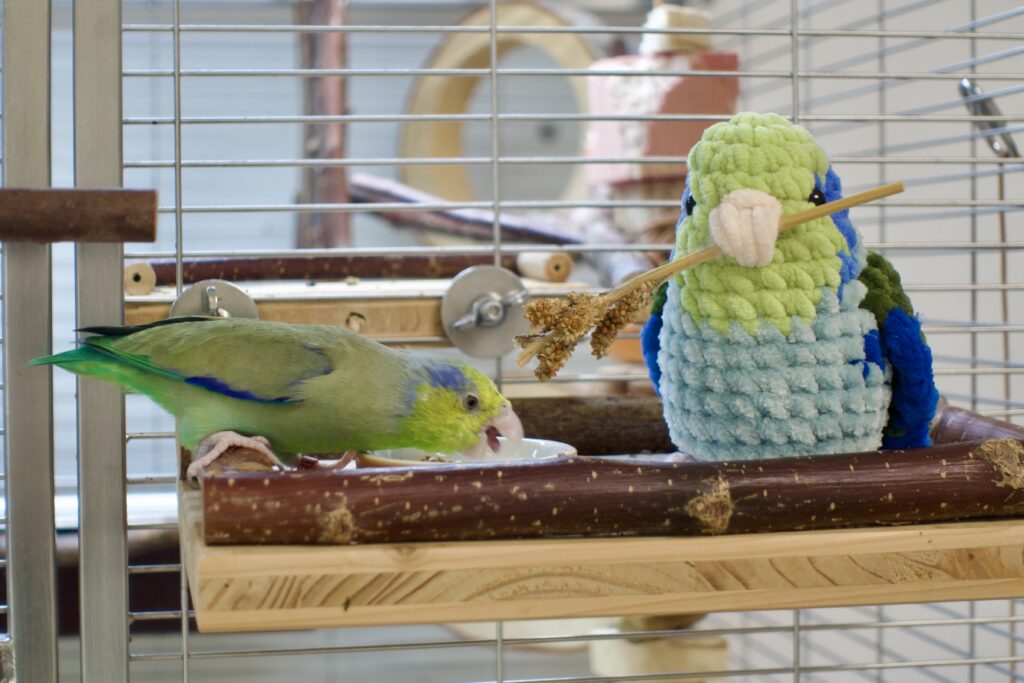We can all agree on one thing: Our feathered friends are cute as a button no matter what they're doing. Still, many keepers wonder what this or that behaviour actually means or how I recognize when my parrotlets are relaxed, scared or aggressive. And rightly so because as parrot keepers it is in our responsibility to correctly read our protégés' behaviour and emotions. This way we can recognize when our parrots are doing well, when they're not, when they feel cornered or when breeding mood sets in.
Now, I'm not the first one to deal with this topic. However, most sources refer to large parrots whose behaviour differs from smaller species in several key aspects. In addition, behaviour differs from species to species. This blog post should serve as an introduction into behaviour of parrots in general but especially parrotlets in captivity. The accompanying wiki article offers a detailed encyclopedia of the behavioural repertoire of parrotlets.
Basics
The 4 characteristics for describing body language and behaviour
First, a few basics for reading body language in parrots. Overall, there are four characteristics providing us with information about a bird's emotional state:
1. The position of the feathers: Are they smooth, loose, ruffled or fluffed? Which parts of the plumage are erect and which are smooth?
2. The eyes: Are they wide open, relaxed, closed or is the bird blinking? Where does the bird look?
3. The posture: Does the bird make itself look small or big, does he sit upright or crouched?
4. The basic arousal or energy: Changes in the position of the feathers (both towards and away from the body) need energy, just as opening the eyes or any posture diverging from normal, relaxed perching. That means that everything that is not relaxed, i.e. low arousal, is tense, i.e. high arousal. If the parrot is aroused, its body is releasing energy. It only does so if something important (for survival) happens. That is why the body supplies large amounts of energy for reproduction, fear/flight and defence/fight.
With the help of these four characteristics you get a good picture of a parrots emotional state and what it's trying to communicate to his environment. Using this foundation, you can also assess unfamiliar birds and other parrot species quite well.
The most important basic emotions of body language
Using our four characteristics we are now able to describe the most important basic emotional states. Though these differ between species in their details, the basic structure is the same with all parrots. Our mascot Forpi kindly demonstrates this for us. 😉
Fear/tension
1. Feathers: smooth
2. Eyes: big, wide, round
3. Posture: stretched, upright
4. Arousal: high, tense
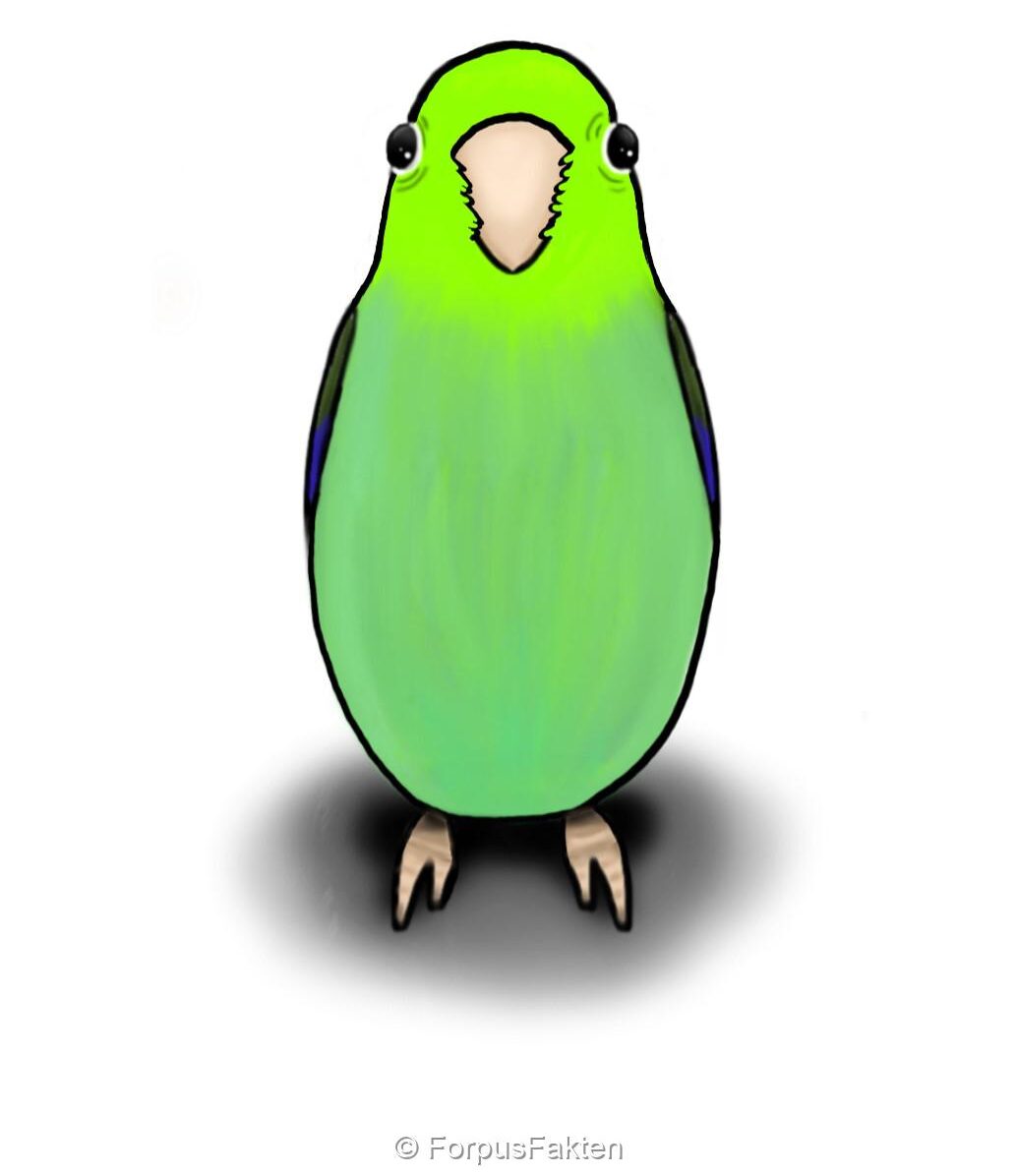
Anger/aggression
1. Feathers: erect
2. Eyes: almond-shaped or round
3. Posture: crouched, almost or fully horizontal
4. Arousal: high, tense
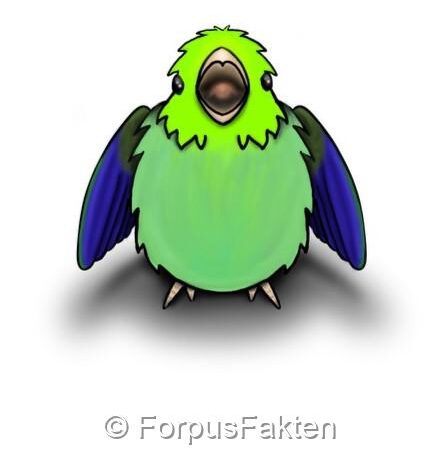
Friendly
1. Feathers: loose, relaxed, maybe slightly fluffed
2. Eyes: almond-shaped, almost or fully closed
3. Posture: neutral (neither upright nor crouched)
4. Arousal: low to medium
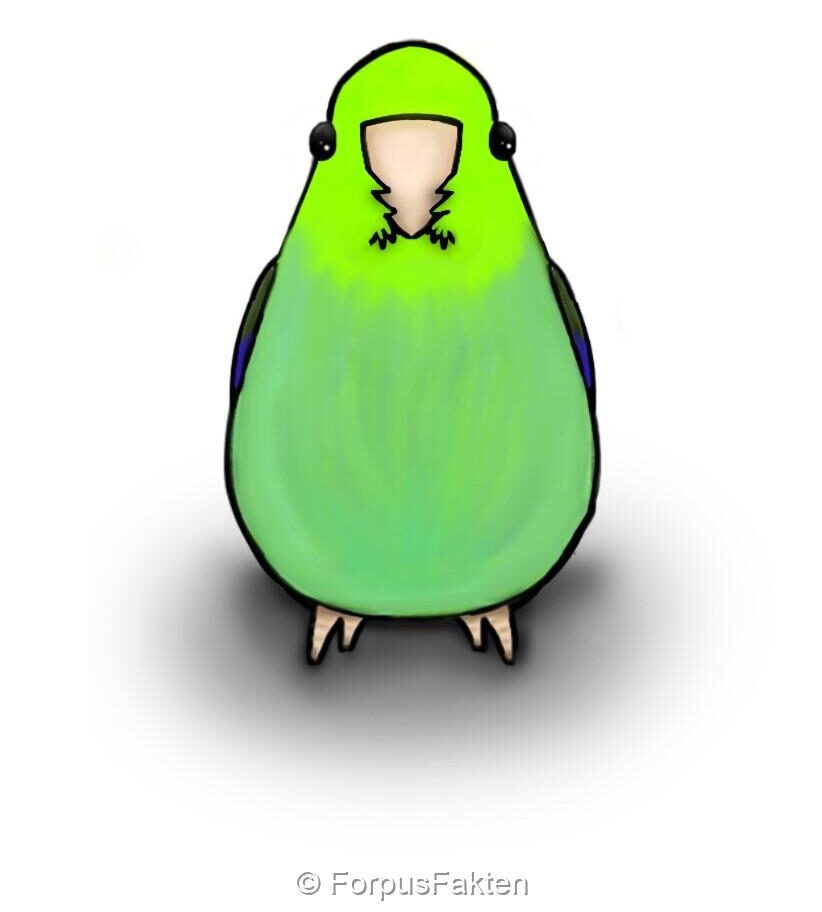
Relaxed
1. Feathers: loose, relaxed or fluffed
2. Eyes: almond-shaped, almost or fully closed
3. Posture: neutral to small and round
4. Arousal: low, relaxed
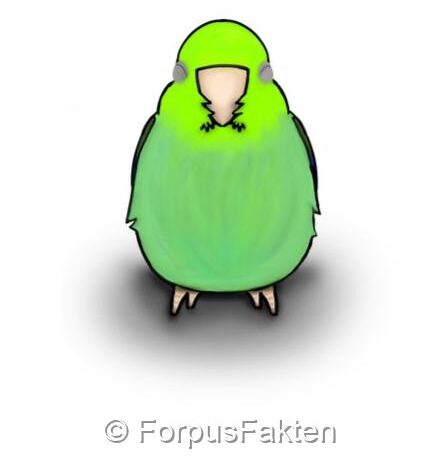
Discomfort/sick
1. Feathers: extremely fluffed/ruffled
2. Eyes: almond-shaped, almost or fully closed
3. Posture: small, round
4. Arousal: very low, torpid/apathetic
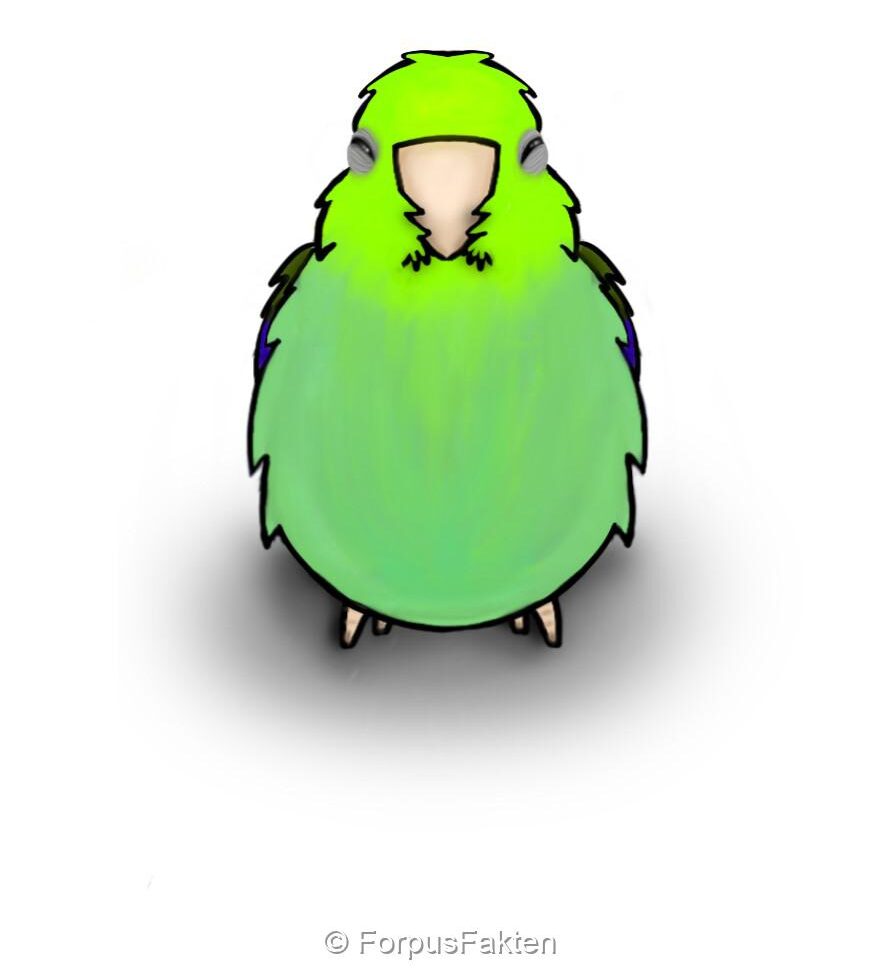
With these basics you can read the most important body language of your birdies, so you know when they're happy, stressed or if your couple harmonizes.
Understanding still more behaviour
The behavioural spectrum of parrots is much bigger, species-specific and includes much more than the covered body language. That's why the detailed behaviour encyclopedia article about parrotlets is this way:
Sources
Alan B. Bond & Judy Diamond: Thinking like a Parrot – Perspectives from the Wild. The University of Chicago Press, Chicago and London 2019, ISBN 978-0-226-24878-3.
https://meine-papageien.wixsite.com/manu/blank-mop79 (as of 13.01.2023)
Johanna-Louise Dehne: Körpersprache und normale Verhaltensweisen der in Gefangenschaft lebenden Großpapageien. Arbeitsgemeinschaft Vogel und ich bei www.vogelforen.de, Infoblatt V03 2005.
Volker Munkes & Heidrun Schrooten: Papageienverhalten verstehen: Edition Gefiederte Welt. Ulmer, Stuttgart 2008, ISBN 978-3-8001-5446-3.
Werner Lantermann: Sittiche und Papageien – Verhalten in Freiland und Voliere. Oertel+Spörer, Reutlingen 2012, ISBN 978-3-88627-406-2.
